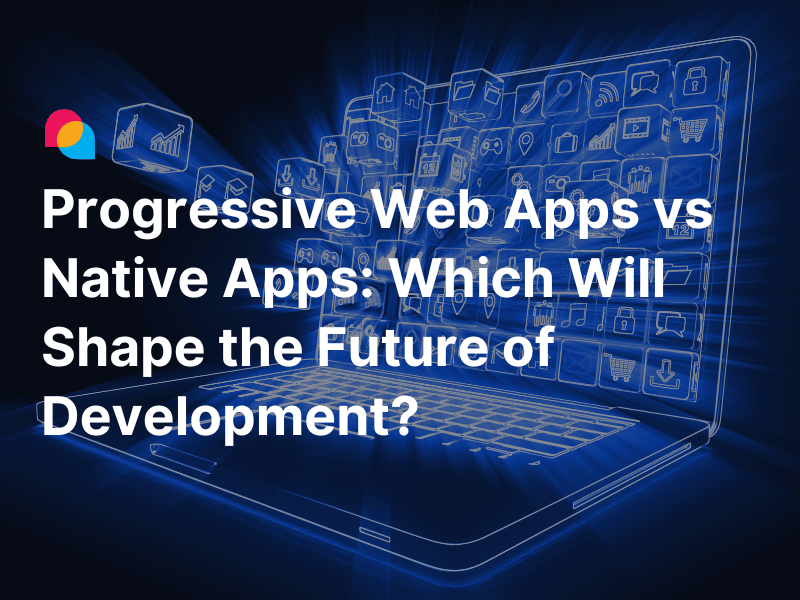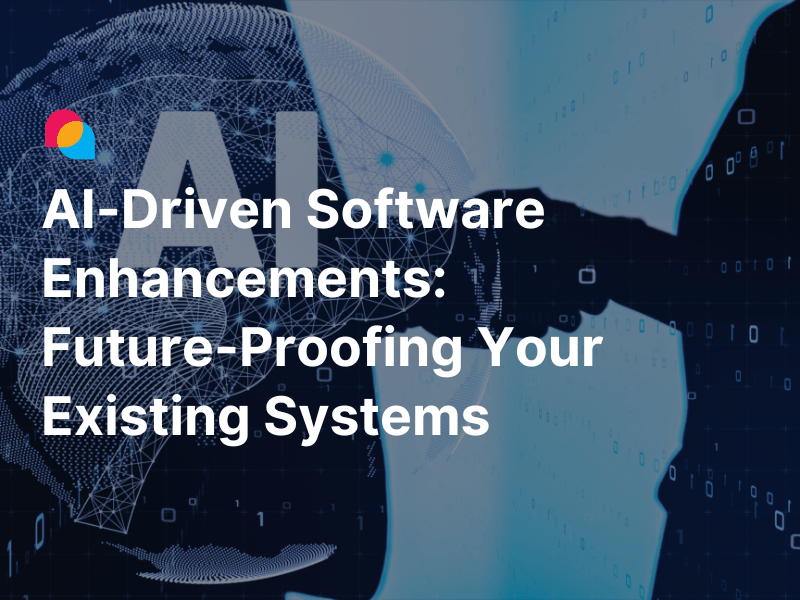In the rapidly evolving world of software development, Big Data stands out as a transformative force. It refers to the vast volumes of structured and unstructured data that organizations collect daily. This data, when properly analyzed and utilized, can provide invaluable insights that drive decision-making, optimize processes, and enhance the overall quality of software products.
Definition and Significance of Big Data
Big Data is characterized by its volume, velocity, variety, and veracity. These attributes allow it to play a critical role in various domains, including software development. The significance of Big Data lies in its ability to uncover patterns, trends, and associations that were previously hidden. This capability is crucial for making informed decisions, predicting future trends, and improving software efficiency and reliability.
The Role of Big Data in Modern Software Development
Enhancing Software Quality and Performance
Big Data plays a pivotal role in enhancing software quality and performance. Predictive analytics, for instance, can help in early bug detection and resolution. By analyzing historical data, these analytics can predict potential issues and provide solutions even before they occur. Real-time data monitoring allows developers to optimize software performance continuously, ensuring that applications run smoothly and efficiently.
Streamlining Development Processes
Big Data also streamlines development processes. Automated testing and continuous integration (CI) are two areas where Big Data has a significant impact. By automating tests, developers can quickly identify and fix issues, leading to faster development cycles. Additionally, Agile and DevOps practices are enriched by Big Data insights, making project management more efficient and collaborative.
Key Big Data Technologies
Hadoop Ecosystem
The Hadoop ecosystem is a cornerstone of Big Data technology. It comprises several core components:
- HDFS (Hadoop Distributed File System): Manages storage across a network of machines, enabling the handling of large data sets.
- MapReduce: Processes vast amounts of data in parallel by breaking it down into manageable chunks.
- YARN (Yet Another Resource Negotiator): Manages resources in the Hadoop cluster.
These components work together to facilitate large-scale data processing, making Hadoop indispensable for Big Data applications.
Apache Spark
Apache Spark stands out for its in-memory computing capabilities, which allow for real-time data processing. This feature makes Spark highly suitable for machine learning and data analytics applications. Its speed and efficiency in handling Big Data make it a preferred choice for developers looking to harness real-time insights.
NoSQL Databases
NoSQL databases offer several advantages over traditional relational databases, especially in Big Data scenarios. There are different types of NoSQL databases:
- Document: Store data in document format, ideal for hierarchical data.
- Key-Value: Efficient for simple, fast retrieval of values using unique keys.
- Column-Family: Store data in columns, allowing for high-performance queries.
- Graph: Handle complex relationships between data points effectively.
These databases provide flexibility and scalability, making them suitable for various Big Data applications.
Kafka and Stream Processing
Kafka is essential for real-time data streaming and event-driven architecture. It integrates seamlessly with other Big Data tools, enabling the processing and analysis of streaming data in real-time. Kafka's ability to handle high throughput and low latency makes it ideal for Big Data environments.
Data-Driven Development Practices
Data-Driven Decision Making
Incorporating data-driven decision-making into software development involves utilizing data for requirement gathering and feature prioritization. This approach ensures that the development process aligns with user needs and market demands. Techniques like A/B testing and user behavior analytics provide concrete data that guides feature development and optimization.
Data-Driven Design and Architecture
Designing software architectures optimized for Big Data involves embracing data-centric design patterns and microservices. These patterns ensure that the software can handle large volumes of data efficiently. Microservices architecture, in particular, allows for modular development and deployment, making the system more resilient and scalable.
Machine Learning and AI Integration
Implementing Machine Learning Models
The process of integrating machine learning models into software development spans from data collection to model deployment. Tools and frameworks like TensorFlow, PyTorch, and Scikit-learn are widely used to build and deploy these models. Machine learning enhances software functionality by enabling predictive analytics, automated decision-making, and personalized user experiences.
AI-Powered Development Tools
AI-driven tools are revolutionizing software development by providing intelligent code completion, error detection, and project management. These tools help developers write better code faster and manage resources more efficiently. AI's role in software development is expanding, making it an indispensable part of the development toolkit.

Big Data Analytics in Software Testing
Test Data Management
Effective test data management is critical in software testing, especially when dealing with Big Data applications. Generating and managing large volumes of test data ensures comprehensive testing coverage and enhances the reliability of software products. Techniques like synthetic data generation and anonymization play a pivotal role in creating test datasets that mimic real-world scenarios without compromising user privacy.
Predictive Testing and Quality Assurance
Predictive models are increasingly used to identify high-risk areas in software projects. By analyzing historical data, these models can predict potential defects and performance issues, enabling proactive quality assurance measures. Continuous testing, powered by Big Data analytics, ensures that software is consistently monitored and improved throughout its lifecycle, leading to higher quality and more resilient applications.
Security and Privacy Considerations
Data Security in Big Data Technologies
Ensuring data security is paramount when working with Big Data technologies. Techniques such as encryption, access control, and secure data storage are essential to protect sensitive information. Compliance with regulations like GDPR and CCPA is also crucial to maintain user trust and avoid legal repercussions. Implementing robust security measures helps safeguard data against breaches and unauthorized access.
Privacy-Preserving Techniques
To address privacy concerns, techniques such as differential privacy and anonymization are employed. Differential privacy adds noise to data, making it difficult to identify individual records while preserving overall data utility. Anonymization methods remove personally identifiable information, ensuring that datasets cannot be traced back to specific individuals. Additionally, secure multi-party computation and federated learning enable collaborative data analysis without exposing raw data, enhancing privacy protection.
Case Studies and Industry Applications
Case Study 1: Real-time Analytics Platform
A leading financial services company implemented a real-time analytics platform using Big Data technologies. By leveraging Apache Kafka and Spark, the company was able to process and analyze streaming data in real-time, providing instant insights into market trends and customer behavior. This implementation resulted in improved decision-making, enhanced customer experiences, and a significant increase in operational efficiency.
Recent real-world examples highlight the transformative impact of real-time analytics in financial services. For instance, JPMorgan Chase utilizes Big Data and machine learning to enhance its risk management strategies. By analyzing vast datasets in real-time, the bank can identify subtle patterns and anomalies, leading to more informed decisions and improved customer satisfaction (DigitalDefynd). Additionally, the integration of Apache Kafka and Spark has enabled real-time transaction monitoring, significantly reducing fraud incidents and enhancing security measures (McKinsey & Company).
Case Study 2: Predictive Maintenance System
A manufacturing firm adopted a predictive maintenance system powered by Big Data and machine learning. Using sensors and IoT devices, the company collected vast amounts of data on machine performance. Predictive analytics models processed this data to predict equipment failures before they occurred, reducing downtime and maintenance costs. This proactive approach to maintenance led to increased productivity and substantial cost savings.
The effectiveness of predictive maintenance systems is well-documented. For example, Toyota has implemented a similar system that utilizes real-time data from IoT devices to monitor equipment health and predict maintenance needs. This has not only reduced unplanned downtime but also extended the lifespan of machinery, leading to significant cost savings and enhanced operational efficiency (McKinsey & Company) (DATAVERSITY). Similarly, in the healthcare sector, real-time analytics are employed to predict equipment failures in critical medical devices, ensuring continuous operation and improving patient care (DevsData).
Lessons Learned and Best Practices
These case studies highlight several key takeaways and best practices for successfully implementing Big Data in software development:
- Start with a clear understanding of business objectives and align Big Data initiatives accordingly.
- Invest in scalable and flexible Big Data infrastructure to handle growing data volumes and complex analytics.
- Foster a data-driven culture within the organization, encouraging collaboration and continuous learning.
- Address security and privacy concerns from the outset to build trust and ensure compliance with regulations.
- Continuously monitor and refine Big Data solutions to adapt to changing business needs and technological advancements.
Future Trends and Innovations
Quantum Computing and Big Data
Quantum computing holds the promise of revolutionizing Big Data processing by solving complex problems at unprecedented speeds. While still in its early stages, quantum computing has the potential to transform how we analyze and interpret large datasets, opening up new possibilities for innovation and discovery.
Edge Computing and Real-time Data Processing
Edge computing is another emerging trend that is set to impact Big Data significantly. By processing data closer to its source, edge computing reduces latency and enhances real-time data processing capabilities. This is particularly important for applications requiring immediate insights and quick decision-making, such as autonomous vehicles and smart cities.
Impact of Big Data on Future Software Development
The integration of Big Data in software development is poised to redefine the roles of developers and data scientists. As Big Data technologies evolve, developers will need to acquire new skills and expertise in data analytics, machine learning, and AI. The collaboration between software developers and data scientists will become more critical, driving innovation and creating more intelligent and adaptive software solutions.
Anticipated Advancements and Their Potential Impact
Looking ahead, we can expect several advancements in Big Data technologies, including:
- Improved data integration and interoperability across different platforms and systems.
- Enhanced AI and machine learning algorithms for more accurate and actionable insights.
- Greater emphasis on data ethics and responsible AI to ensure fair and unbiased outcomes.
- Increased adoption of serverless computing for more efficient and cost-effective data processing.
These advancements will continue to shape the future landscape of software development, making it more data-driven, intelligent, and responsive to user needs.
Conclusion
Big Data is fundamentally transforming software development by providing the tools and insights needed to enhance quality, streamline processes, and drive innovation. From predictive analytics and real-time data processing to machine learning integration and data-driven decision-making, Big Data technologies are reshaping how software is developed and maintained.
As we look to the future, the role of Big Data in software development will continue to expand, driven by advancements in quantum computing, edge computing, and AI. Developers and data scientists will need to collaborate more closely, leveraging their combined expertise to create innovative and intelligent software solutions. By embracing Big Data, organizations can stay ahead of the curve, delivering superior products and services that meet the evolving needs of their customers.
References:
The Next Big Data Leap: How AI Is Reshaping Data And Analytics Roles - Forbes





